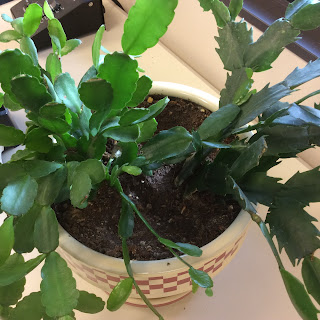Tony Koski, Extension Turf Specialist
 The prolonged snow cover for the past few weeks has caused
some folks to express concern about snow mold in lawns. While there are a number
of snow mold diseases that can occur on turf, the most common one occurring on
home lawns is gray snow mold (Typhula
incarnata). We blogged about snow mold in lawns a couple of years ago. I
won’t repeat what I wrote there – where we covered the basics of snow mold in
lawns. Read more here:
http://csuhort.blogspot.com/2013/12/does-snow-cover-cause-snow-mold-in.html
The prolonged snow cover for the past few weeks has caused
some folks to express concern about snow mold in lawns. While there are a number
of snow mold diseases that can occur on turf, the most common one occurring on
home lawns is gray snow mold (Typhula
incarnata). We blogged about snow mold in lawns a couple of years ago. I
won’t repeat what I wrote there – where we covered the basics of snow mold in
lawns. Read more here:
http://csuhort.blogspot.com/2013/12/does-snow-cover-cause-snow-mold-in.html |
| Snow mold where snow persisted along north side of a wood fence. |
Gray snow mold is most likely to occur on lawns when the
turf has been covered by snow CONTINUOUSLY for 40-60 days. While prolonged snow
cover is common on mountain home lawns, it is less common along the Front Range
and in other lower elevation regions of Colorado. The Typhula fungus that causes snow mold in lawns is psychrophilic
(meaning it grows most happily at temperatures around 32 F). And, like many
molds, it enjoys dark, moist (but not frozen) conditions.
While we have some snow on the ground now, it is not a deep
snow. And it has been extremely cold, in case you haven’t noticed. The
temperatures under the current snow cover are much lower than the optimum for
snow mold to flourish – so I wouldn’t be concerned about snow mold in lawns
now.
 |
Snow mold can be more severe on lawns when leaves
aren't mulched or raked in the fall
|
Even if we get additional snow on top of what is existing, the ground has
sufficiently cooled (OK, frozen) to the point that snow mold shouldn’t be a
problem in lawns. Snow mold
is most severe in years where we receive frequent snows (or long-lasting snow cover)
beginning in the fall BEFORE the ground freezes. Deep, long-lasting snow cover
on top of unfrozen turf creates perfect conditions for snow mold on turf.
Fortunately this combination of conditions is rare along the Front Range (but
more common in the mountains).
 |
| Snow mold on dead plant matter in a flower bed. |
However, where snow is piled near sidewalks or driveways, or
where it persists in shady landscapes or on the north side of homes or fences,
snow mold can occur in those parts of the landscape. In the absence of
prolonged snow cover, it can also occur on lawns where a layer of wet, matted tree
leaves are left over from the fall (thus the importance of mulching or raking
fall leaves on lawns). And because it is known as a facultative saprophyte
(fancy words meaning it can live on dead plant material, though it prefers
living), you can often find snow mold growing on dead plants and accumulated
tree leaves in lawns, flowerbeds and vegetable gardens.
Even in those years when we do see a bit of snow mold in
lawns, it rarely is so
severe that it kills the entire grass plant – with damage
limited to leaf blades at the top of the plant. The crown is able to produce
new shoots as weather warms in the spring to replace those that have been
killed by the snow mold fungus.
 |
| The snow mold fungus usually just kills grass leaves in lawns - not the entire plant; the turf usually recovers quickly as temperatures warm in the spring. |





















